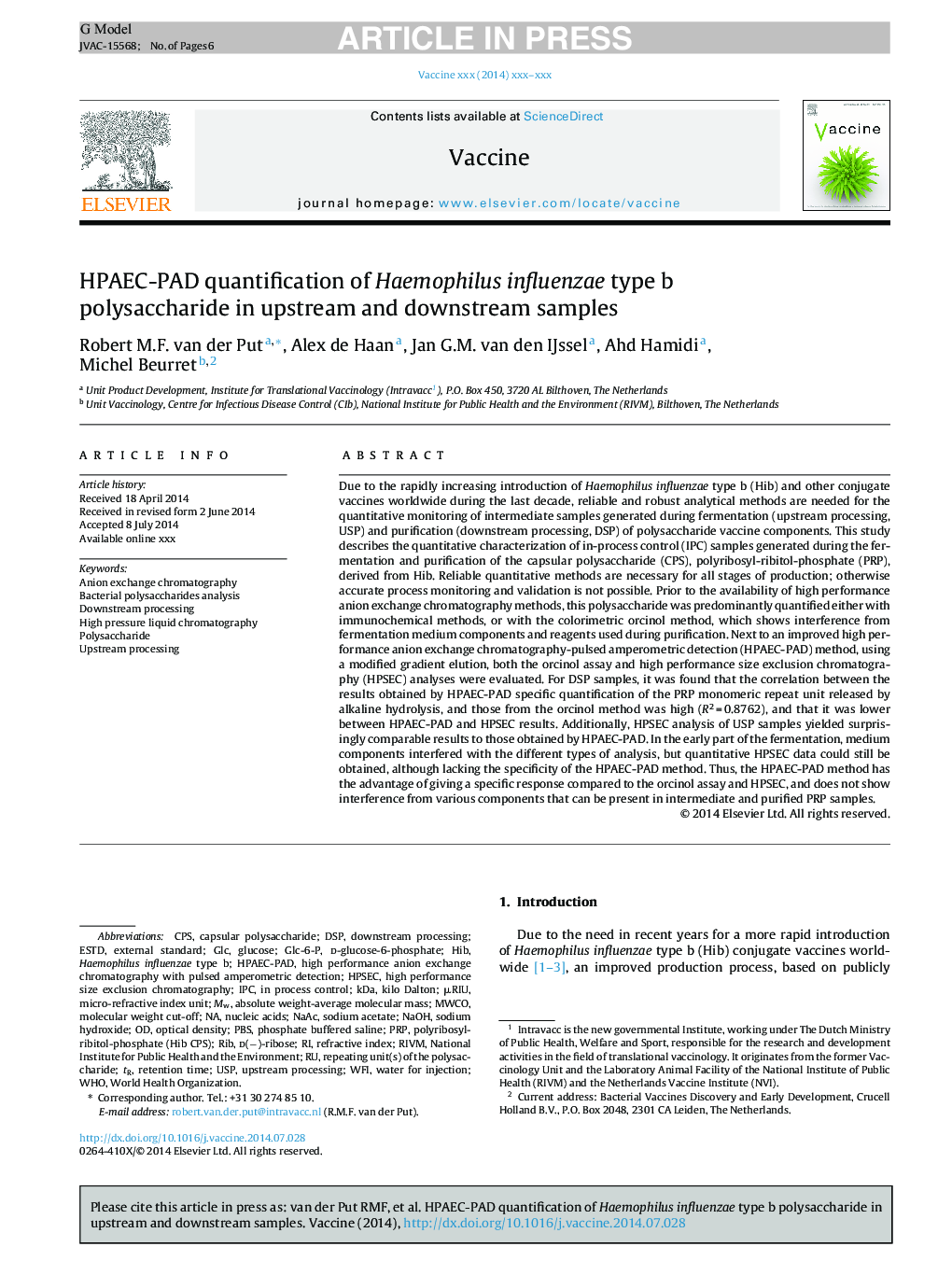| Article ID | Journal | Published Year | Pages | File Type |
|---|---|---|---|---|
| 10962922 | Vaccine | 2015 | 6 Pages |
Abstract
Due to the rapidly increasing introduction of Haemophilus influenzae type b (Hib) and other conjugate vaccines worldwide during the last decade, reliable and robust analytical methods are needed for the quantitative monitoring of intermediate samples generated during fermentation (upstream processing, USP) and purification (downstream processing, DSP) of polysaccharide vaccine components. This study describes the quantitative characterization of in-process control (IPC) samples generated during the fermentation and purification of the capsular polysaccharide (CPS), polyribosyl-ribitol-phosphate (PRP), derived from Hib. Reliable quantitative methods are necessary for all stages of production; otherwise accurate process monitoring and validation is not possible. Prior to the availability of high performance anion exchange chromatography methods, this polysaccharide was predominantly quantified either with immunochemical methods, or with the colorimetric orcinol method, which shows interference from fermentation medium components and reagents used during purification. Next to an improved high performance anion exchange chromatography-pulsed amperometric detection (HPAEC-PAD) method, using a modified gradient elution, both the orcinol assay and high performance size exclusion chromatography (HPSEC) analyses were evaluated. For DSP samples, it was found that the correlation between the results obtained by HPAEC-PAD specific quantification of the PRP monomeric repeat unit released by alkaline hydrolysis, and those from the orcinol method was high (R2Â =Â 0.8762), and that it was lower between HPAEC-PAD and HPSEC results. Additionally, HPSEC analysis of USP samples yielded surprisingly comparable results to those obtained by HPAEC-PAD. In the early part of the fermentation, medium components interfered with the different types of analysis, but quantitative HPSEC data could still be obtained, although lacking the specificity of the HPAEC-PAD method. Thus, the HPAEC-PAD method has the advantage of giving a specific response compared to the orcinol assay and HPSEC, and does not show interference from various components that can be present in intermediate and purified PRP samples.
Keywords
PBSd-glucose-6-phosphateNaAcWFIglc-6-PRIVMUSPESTDPrPIPCHPAEC-PADkDaMWCODSPGlcHPSECNaOHcpswater for injectionSodium acetateExternal standardNucleic acidsRibRetention timeWorld Health OrganizationRefractive indexUpstream processingDownstream processingPhosphate buffered salineHaemophilus influenzae type bHibsodium hydroxideCapsular polysaccharidePolysaccharideoptical densitymolecular weight cut-offanion exchange chromatographyhigh performance size exclusion chromatographyHigh pressure liquid chromatographyhigh performance anion exchange chromatography with pulsed amperometric detectionWHOKilo DaltonGlucose
Related Topics
Life Sciences
Immunology and Microbiology
Immunology
Authors
Robert M.F. van der Put, Alex de Haan, Jan G.M. van den IJssel, Ahd Hamidi, Michel Beurret,
